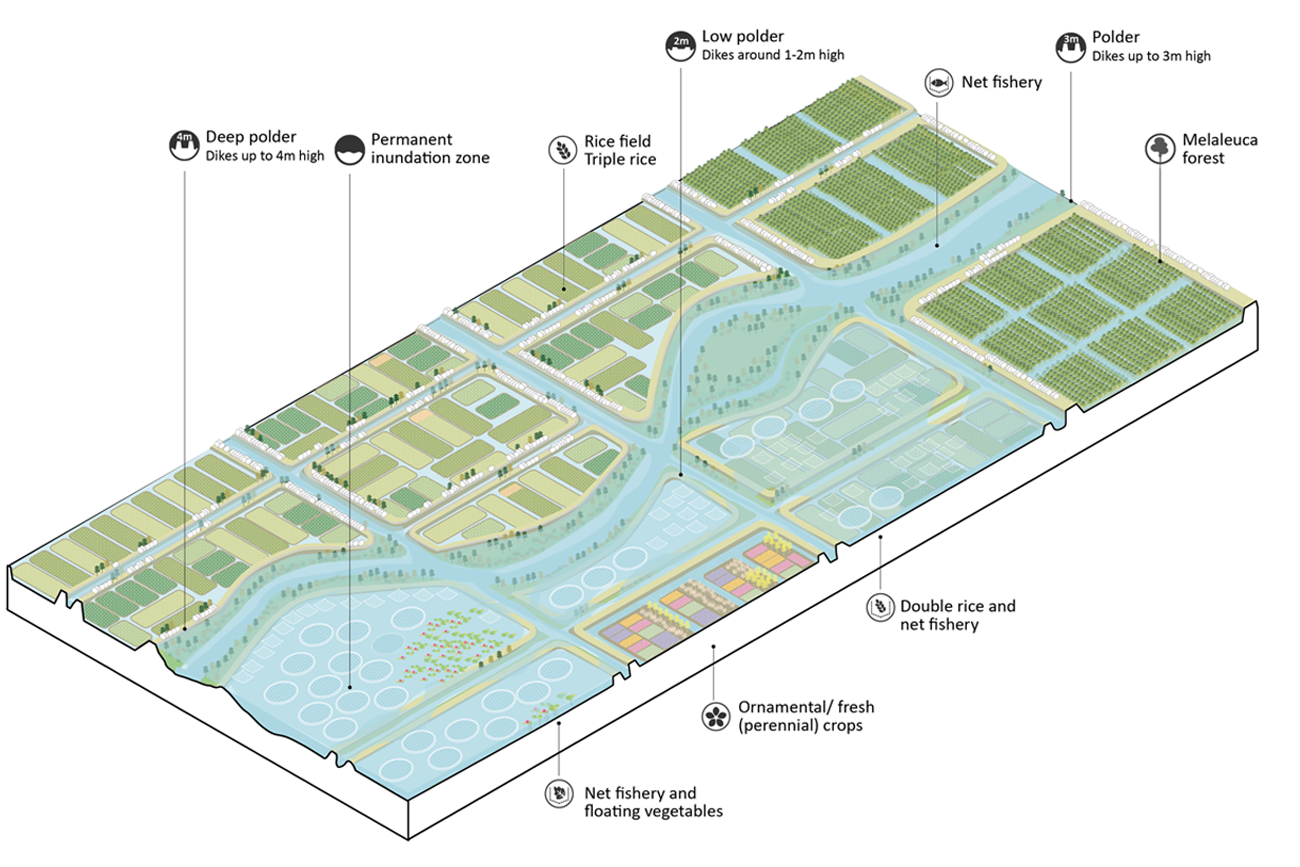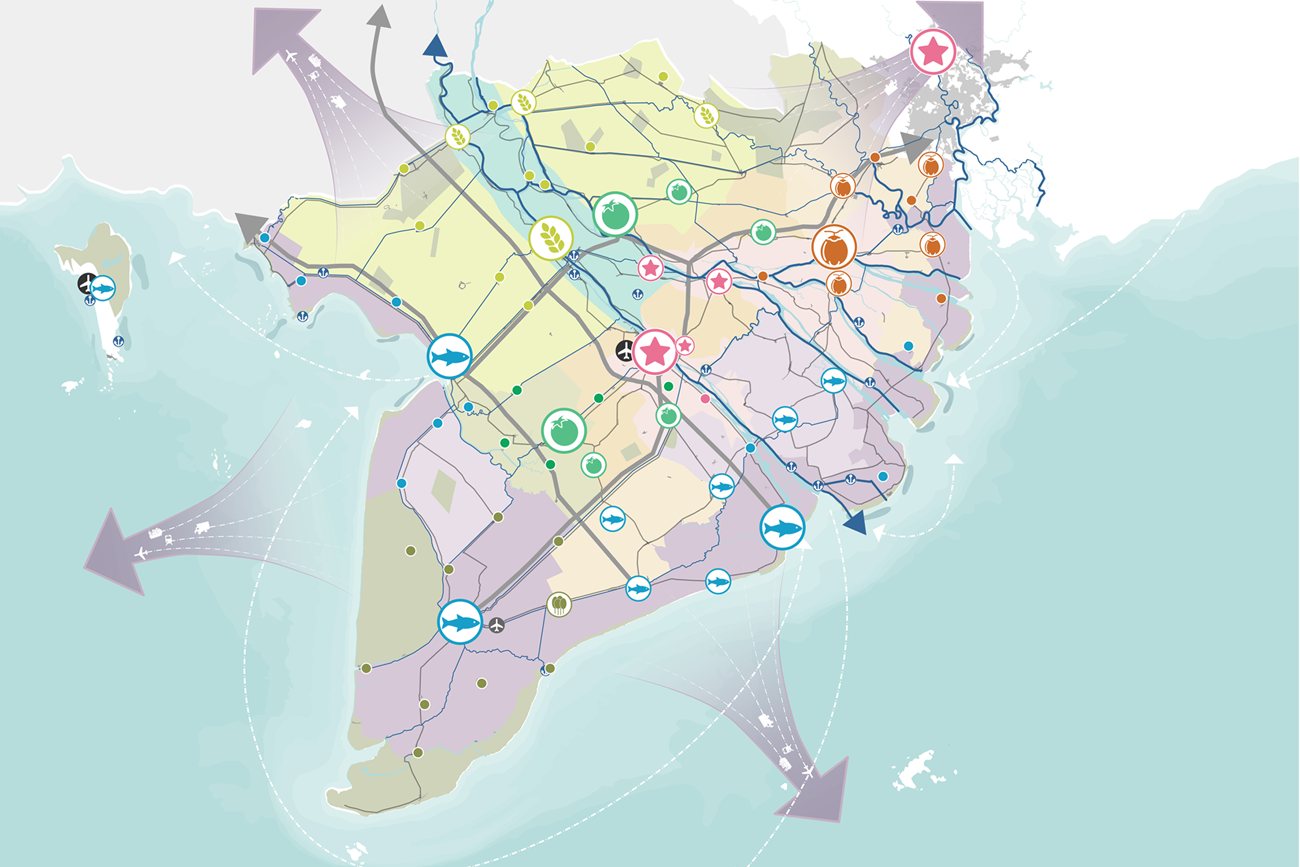Mekong Delta, Vietnam
Mekong Agriculture Strategy
Sustainable agricultural transformation plan for the Mekong Delta that supports the regions social-economic prosperity
The Mekong Delta is an important agricultural region with rich natural resources. The development orientation of agriculture here is drastically affected by climate change and upstream developments. Future agriculture development should conform to stringent conditions including reduced freshwater availability, increased salinity intrusion, land subsidence, and extreme monsoon floods.
The water-related impacts of climate change, including salinity, seasonal flooding and droughts etc. led to a redefined agro-hydrological zoning of the Mekong Delta. Together with Wageningen University & Research, we developed an Agricultural Transformation Plan (ATP) to adapt and strengthen the agriculture sector in the marine zone, saline coastal zone, fresh-brackish intermittent zone, and fresh upper zone. Besides, the study also includes the development of hub areas where the products can be processed and linked to domestic, regional, and international markets.
The brackish coastal zone
Relying entirely on saline and brackish water, the coastal area is the primary production zone for brackish/saline aquaculture. Mangrove regeneration, water quality control, and pathogen control are the three main environmental targets to be adhered to in the design principles for this area.
The brackish-fresh intermittent zone
The intermittent zone is expected to cope with changing water conditions(fresh-saline). Timely switching from fresh to the saline production system and engaging enough freshwater buffer capacity to overcome the saline conditions are the main strategies to adapt to the dynamic agro-hydrological conditions.
The fresh upper zone
The upper zone is guaranteed with year-round fresh water, thus the raising of freshwater aquaculture is taken as a high-value production strategy. Meanwhile, considering regular flooding, the regeneration of the melaleuca wetland area could restore the floodplain retention capacity, and brings ecotourism, aquaculture values. Besides, continuing rice production and targeting high-value crop diversification (vegetables, ornamental plants, fruits) brings higher income opportunities for the upper zone.
The marine zone
Marine culture is considered a growth sector for the coming decades in both volume and value. To ensure a sustainable future, marine fisheries require a strong consolidation and regulation of the whole sector – covering fleet, catch & landing, with the setting & maintaining of clear quota.
The hub
The spatial distribution of the hubs should be in accordance with the spatial orientation of the agricultural development strategy. The basic infrastructure and connection to the transport network is considered in the plan to ensure the hub network. To add value to the agri-food business, fostering expertise centers of services around specified value chains is taken as an important strategy.
Client: Netherlands Embassy in Vietnam
In cooperation with: Wageningen University; Partners for Water program
















